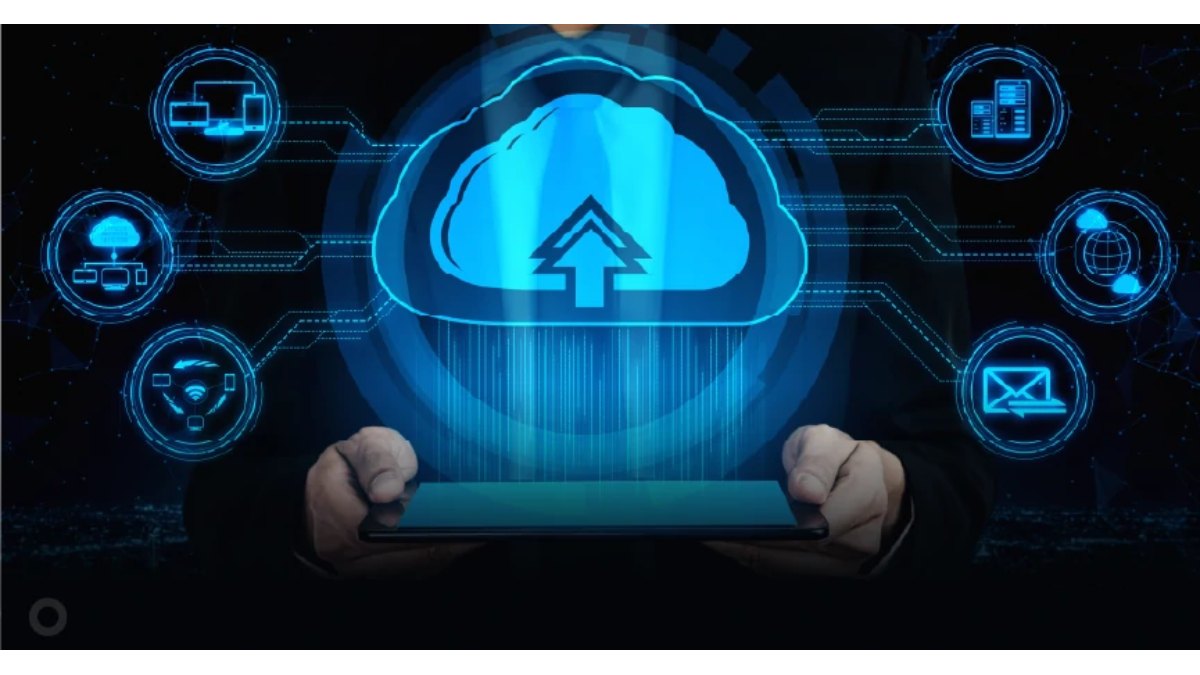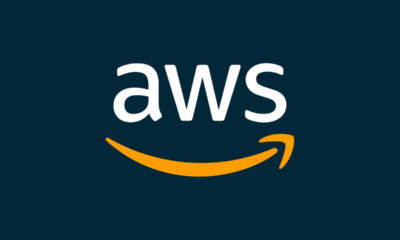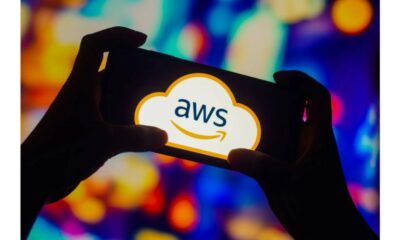Business
Accelerating Legacy Application Modernization with AWS Migration Services

If your release calendar looks busy but nothing important ships, you are paying an invisible tax. It shows up as late nights, slow fixes, and risk in every change. This post lays out a practical path to reduce that tax with a modernization program on AWS that is grounded in real signals, careful scoping, and repeatable patterns. You will find concrete heuristics, decision tables, and a roadmap you can run next quarter.
Legacy systems challenges
Most legacy risk hides in four places. Measure these before you plan any move.
1. Release risk
· Symptoms: long-lived branches, manual test gates, last-minute fixes.
· Signals to collect mean time to restore, change failure rate, burn-in defects in the first 48 hours.
· What it means: your pipeline is the constraint, not just the code.
2. Capacity buffers
· Symptoms: idle servers, overnight batch windows, seasonal panic over hardware.
· Signals to collect: 95th percentile CPU and memory, queue depth spikes, time spent on capacity planning.
· What it means: you are funding insurance rather than outcomes.
3. Toolchain mismatch
· Symptoms: unsupported runtimes, vendor-locked appliances, end-of-life databases.
· Signals to collect: CVE count on base images, patch lead time, license overage events.
· What it means: security and cost pressure will rise every quarter you delay.
4. Data gravity
· Symptoms: tight coupling to on-prem ETL jobs, nightly dumps, schema drift.
· Signals to collect: data freshness by domain, volume of manual extracts, number of one-off reports.
· What it means: analytics and ML efforts stall because upstream systems move too slowly.
Quick diagnostic table
| Legacy symptom | Measurable signal to pull in week 1 | Cost you can quantify in week 2 |
| Hotfixes after every release | Change failure rate over last 12 releases | Rework hours times average loaded rate |
| Weekend batch overruns | SLA breach minutes per month | Penalties or lost orders per breach |
| Unsupported runtime | Open high-severity CVEs per service | Escalation effort per CVE plus audit findings |
| Manual deploys | Hands-on time per deploy | People hours times deploys per month |
Do this baseline with your delivery and operations leads. Then write the first one-page brief on scope, risk, and target outcomes. Treat it like a product charter. This is the raw material for AWS application modernization.
AWS services enabling modernization
You do not start by moving everything. You start by selecting the smallest slice that proves a better path. The services that make AWS application modernization fast and low risk fall into four toolkits, forming the foundation of most AWS application modernization services strategies used across enterprises today.
A. Discovery and migration
· AWS Application Discovery Service and Migration Hub to map hosts, ports, and service dependencies.
· Database Migration Service for zero-to-near-zero downtime data moves with change data capture.
· AWS App2Container migration for extracting a running Java or .NET app into a container image with minimal code change.
B. Containers and orchestration
· Amazon ECR for secure image storage and lifecycle policies.
· Amazon ECS for simple, managed container scheduling.
· Amazon EKS for Kubernetes where you need custom controllers and ecosystem tools. When you plan AWS Elastic Kubernetes Service (EKS) modernization, focus on cluster add-ons, network policies, and upgrade cadence from day one.
C. Serverless compute and eventing
· AWS Lambda for fine-grained units of compute that scale to zero and up with demand.
· Amazon API Gateway and AWS Step Functions for APIs and workflows.
· SQS and SNS to decouple producers and consumers. Plan AWS Lambda re-architecture where spiky workloads, cron jobs, or single-purpose services are natural fits.
D. Data, observability, and security
· Amazon Aurora and DynamoDB for managed data stores with clear scaling stories.
· S3 for durable object storage and cost-tiering with lifecycle rules.
· CloudWatch, X-Ray, and OpenTelemetry for metrics and traces.
· AWS WAF, Shield, IAM, and KMS to keep controls crisp and auditable.
For Windows workloads, you will often combine containerization with runtime upgrades. That is where .NET to .NET Core on AWS pays off. You drop license exposure, gain performance, and open a path to Linux containers and ARM-based savings.
Approaches: refactor, re-platform, rehost
Picking the wrong pattern creates churn. Use a scoring pass that weighs six criteria. Score each from 1 to 5. Start where the score is highest.
| Criteria | Rehost | Re-platform | Refactor |
| Time to first value | 5 | 4 | 2 |
| Long-term cost reduction | 2 | 4 | 5 |
| Change risk in month 1 | 5 | 4 | 2 |
| Ops skill lift required | 2 | 4 | 5 |
| Performance headroom | 2 | 4 | 5 |
| Compliance clarity | 4 | 4 | 3 |
· If a system is unstable, rehost first to stop the bleeding, then stabilize, then revisit.
· If runtime or database is the constraint, re-platform to managed services and containers.
· If the domain model is wrong or the code is blocking all progress, refactor with strangler patterns and feature toggles.
Concrete patterns that cut time
· Take the web front end and APIs into containers with AWS App2Container migration. Pair it with ECR and ECS to avoid a big-bang platform jump.
· Move stateful services to managed stores early. Each managed service you adopt removes a class of toil.
· Plan a narrow set of functions for AWS Lambda re-architecture where throughput is spiky, batch jobs can become events, or scaling to zero saves real money.
· Use AWS Elastic Kubernetes Service (EKS) modernization for teams that already use Kubernetes locally. Standardize add-ons like CoreDNS, VPC CNI, metrics server, and cluster autoscaler so upgrades are predictable.
· For Windows workloads, target pilot services for .NET to .NET Core on AWS. Confirm library compatibility, run load tests, and document the build chain.
A field-tested slicing model
Break a system into three slices:
1. Edge adapters: API layer, presentation, and public endpoints.
2. Flow workers: background jobs, schedulers, and orchestrations.
3. State holders: databases, queues, and files.
Move slices in that order. The edge gives quick wins in deployability. Workers tame variability. State holders finish the job once you have confidence in traffic and failure modes.
Business benefits of modernization
Done right, AWS application modernization returns value you can measure and explain. Use the simple value model below in your steering reviews.
Value model
· Operational savings: infra reduction plus toil removed.
· Risk reduction: fewer failed changes, faster restores.
· Revenue protection or lift: fewer checkout failures, better latency in peak periods.
· Speed: features delivered per quarter and lead time to production.
Proof points to collect every month
· Change failure rate under 10 percent for modernized services.
· MTTR under 30 minutes for high-priority services.
· 95th percentile latency improvement of 20 percent on peak day.
· Cost per transaction down by at least 15 percent for workloads that moved from always-on hosts to right-sized containers or serverless.
What not to do?
· Do not count soft future savings as wins. Use only the savings you can trace to invoices, tickets, and dashboards.
· Do not move a service without a steady-state owner. Operations without clear ownership drifts.
· Do not expand scope mid-flight. Finish the current slice first.
Implementation roadmap
You do not need a huge team. You need a clear sequence, tight feedback loops, and steady communication. The plan below assumes a 12-week pilot followed by scale-out.
Phase 0: Alignment and guardrails
· Define the goal, non-goals, and budget guardrails.
· Pick one critical path system with visible pain and a clear business owner.
· Agree on security and compliance rules for accounts, networking, secrets, and logging.
Phase 1: Baseline and architecture in a week
· Map the current flows and dependencies.
· Build thin slices of VPCs, subnets, IAM roles, and CI/CD. Keep it simple.
· Instrument with metrics and traces before the first move.
Phase 2: Pilot service move in weeks 2 to 6
· Containerize the API or web tier with the first pass of AWS App2Container migration. Publish to ECR. Run in ECS or EKS with one AZ and one small replica set.
· Stand up a managed database target where applicable. Migrate with DMS in a shadow mode. Cut over during a controlled release window.
· Identify one batch job for AWS Lambda re-architecture. Replace the cron with EventBridge. Add idempotency keys and DLQs from day one.
· For Windows workloads, select one service for .NET to .NET Core on AWS. Target Linux containers only after tests pass. Bake in automated security scans.
Phase 3: Platform hardening in weeks 7 to 8
· Add blue-green or canary deploys. Automate rollbacks with health checks.
· Adopt autoscaling policies. Use target tracking based on queue depth or p95 latency.
· Standardize golden images or base container layers with CIS-aligned baselines.
· For teams needing Kubernetes, continue AWS Elastic Kubernetes Service (EKS) modernization. Lock cluster versions, apply PodSecurity admission, and enable managed node updates.
Phase 4: Scale-out in weeks 9 to 12
· Repeat the slice approach across two more services. Keep the same templates and pipelines.
· Move read-heavy workloads to Aurora read replicas or DynamoDB global tables where you need regional reach.
· Expand observability with SLOs tied to business transactions.
Sample plan on a page
| Week | Outcome | Owner |
| 1 | Baseline, guardrails, CI/CD, metrics | Platform lead |
| 2 | API containerized, dev cluster live | App lead |
| 3 | DB shadow sync running | Data lead |
| 4 | First prod cutover with canary | App lead |
| 5 | Batch job moved to Lambda with retries | Platform lead |
| 6 | Post-cutover review, stabilize | All |
| 7 | Security hardening and autoscaling | Security and platform |
| 8 | Cost guardrails, right-sizing | FinOps |
| 9 | Second service slice moved | App lead |
| 10 | EKS add-ons standardized | Platform lead |
| 11 | Third service slice moved | App lead |
| 12 | Metrics review, roadmap for scale | Exec sponsor |
Modernization Readiness Index
Score each domain from 1 to 5 on these axes:
· Test readiness: unit, API, and contract coverage.
· Observability: traces for top five user flows.
· Deployment: pipeline speed and rollback safety.
· Data mobility: replication paths and CDC availability.
· Ownership: single accountable owner.
Start with domains that score 3 or above. You will ship outcomes faster and learn with less risk.
Service patterns you can reuse next month
· Golden pipeline pattern: branch protection, build, scan, SBOM, sign, deploy, verify, notify.
· Fail-safe API pattern: circuit breaker, bulkhead, retries with jitter, rate limits.
· Cost guardrail pattern: 90th percentile budget alert per service, automatic reports, and a monthly review with action items.
Common pitfalls and how to avoid them
· Trying to rewrite the whole system. Resist the urge. Ship one slice, then the next.
· Moving state last. Move state early where it reduces toil and risk. Managed databases are a force multiplier for build speed.
· Skipping observability. You cannot prove wins without it. Add traces and SLOs before you cut over.
· Ignoring people and skills. Run weekly clinics, share short runbooks, and keep the playbook in one place all teams can find.
What this means for product leaders?
You get clearer delivery dates, steady cost curves, and fewer weekend calls. Ask for three charts every month:
1. Changes shipped vs failed changes for modernized services.
2. Cost per 1,000 requests for the top five flows.
3. Latency p95 on peak day compared to last quarter.
If these trend in the right direction while customer metrics hold or improve, your program is on track.
Closing thoughts
This is not a tooling story. It is a sequence, a scoreboard, and a habit. Treat your modernization charter like a product with a backlog and outcomes that matter to customers. Start small and treat AWS application modernization as a product. Keep the scope tight. Keep the evidence visible. Keep the wins compounding.
-

 Business2 weeks ago
Business2 weeks agoRandy NG: Inside the Process of Managing End-to-End International Trade Operations
-

 Business2 weeks ago
Business2 weeks agoArdavon Moayer Explains How Discipline and Teamwork Translate to Sales Wins
-

 Cryptocurrency2 weeks ago
Cryptocurrency2 weeks agoRami Beracha Asks, Can Israel Become A Global Leader In Blockchain Innovation?
-

 Tech1 week ago
Tech1 week agoFrontier Galvanizing: The Critical Role Of Galvanizing In Renewable Energy And Utility Projects
-

 Education3 weeks ago
Education3 weeks agoForged in Fire: Nicholas Lawless Unveils Lawless Leadership – The Model Built for a World That Traditional Leadership Can’t Survive
-

 Tech4 weeks ago
Tech4 weeks agoAdsPower Promo Code for 50% Off – Ultimate Guide to AdsPower Benefits (Referral Code Included)
-

 Business3 weeks ago
Business3 weeks agoOPO Group LTD Strengthens Its Global Footprint With Expanding Offices and a Modernized Trading Ecosystem
-

 Business4 weeks ago
Business4 weeks agoThe overlooked costs of working from home














